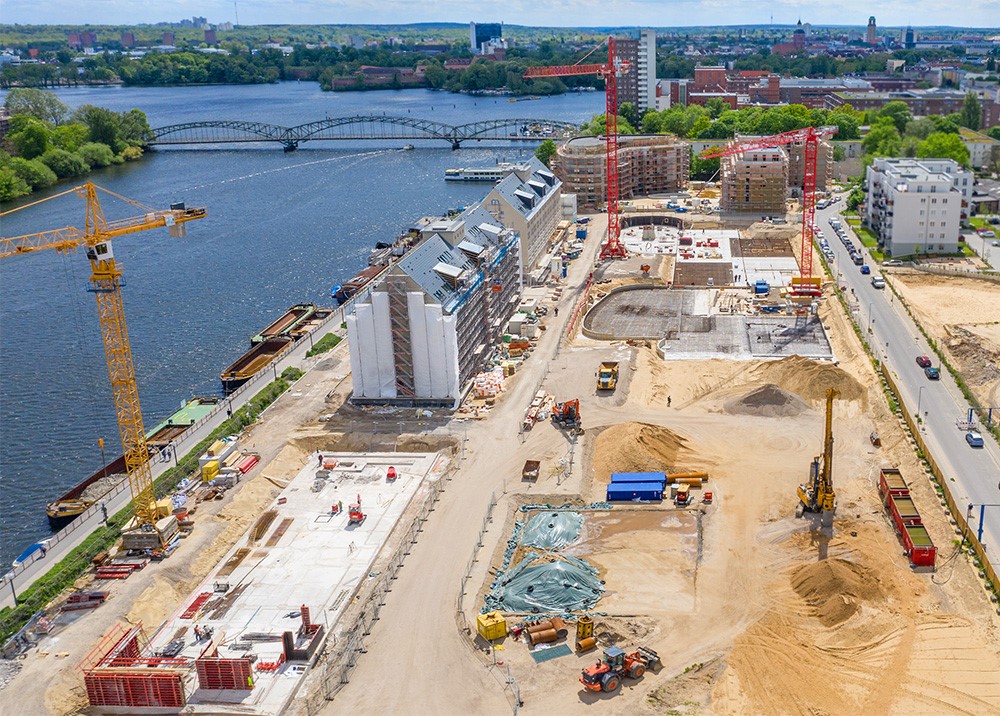Economic Development in the First Three Months of 2022
Key Events During the Reporting Period
The first quarter of 2022 remained impacted by the coronavirus pandemic, and in particular by the impact of the war in Ukraine and its implications. The hostilities in Ukraine have sparked a humanitarian catastrophe and a corresponding wave of refugees. Global economies are confronted with rising commodity prices, as well as increased interest rates and inflation. The international capital markets have been hit by considerable turbulence.
The risk of the war in Ukraine having a potential impact on Vonovia’s business is being monitored and evaluated on an ongoing basis. First effects through rising construction costs and energy prices are perceivable.
The Customer Satisfaction Index (CSI) was on a par with the previous quarter and was up by 1.8 percentage points as against the first quarter of 2021.
Vonovia successfully concluded the refinancing of the takeover of Deutsche Wohnen in the first quarter of 2022. It concluded a promissory note transaction with a total volume of € 1 billion on February 16, 2022. The tranches have a maturity of 5 to 30 years with an average weighted maturity of 7.65 years and average weighted interest of 1.13%.
On March 21, 2022, Vonovia also issued social bonds with maturities of between 3.85 and 6.25 years and a green bond with a ten-year maturity as part of its sustainability strategy. These bonds are fully consistent with the new EU Taxonomy – a first in the real estate sector. The total volume is € 2.5 billion with a coupon of 1.875%.
The bridge financing totaling around € 20 billion (of which € 11,450.0 million were drawn) that was made available by a banking consortium as part of the acquisition of Deutsche Wohnen still had a value of € 3,490.0 million as of December 31, 2021. The outstanding bridge financing was repaid in full in the first quarter of 2022.
Control of 20.5% of the shares in the Adler Group, which were previously held by Aggregate Holdings Invest S.A., has passed to Vonovia as part of a debt recovery action. The shares originally served to secure one of Vonovia’s loan exposures. The exercise of the voting rights attached to the shares by Vonovia was approved by the Federal Cartel Office. Vonovia also retains all options for action, including the sale of some or all of the shares. In the current market environment, however, the company has ruled out any further purchases, let alone a full takeover.
In September 2021, Vonovia and Deutsche Wohnen sold residential and commercial units to public housing companies in Berlin based on an agreement reached with the Berlin State Government. The transaction with a volume of € 2,339.0 million was largely completed in January 2022.
The work on integrating Deutsche Wohnen was continued as scheduled in the first quarter of the year. The focus was on ensuring that the measures were consistent with the company law requirements and planning the details of the actual integration work.
The Supervisory Board appointed Philip Grosse as member of the Management Board and Chief Financial Officer (CFO) effective January 1, 2022. Helene von Roeder, who was previously responsible for this executive division, was appointed Chief Transformation Officer (CTO) with responsibility for the newly created Digitalization and Innovation executive division at the same time. This means that Vonovia has expanded its Management Board from four to five members.
Following its meeting held on March 1, 2022, the Supervisory Board announced that the contract with the CEO Rolf Buch, which was set to expire in February 2023, will be extended for another five years until February 2028.


